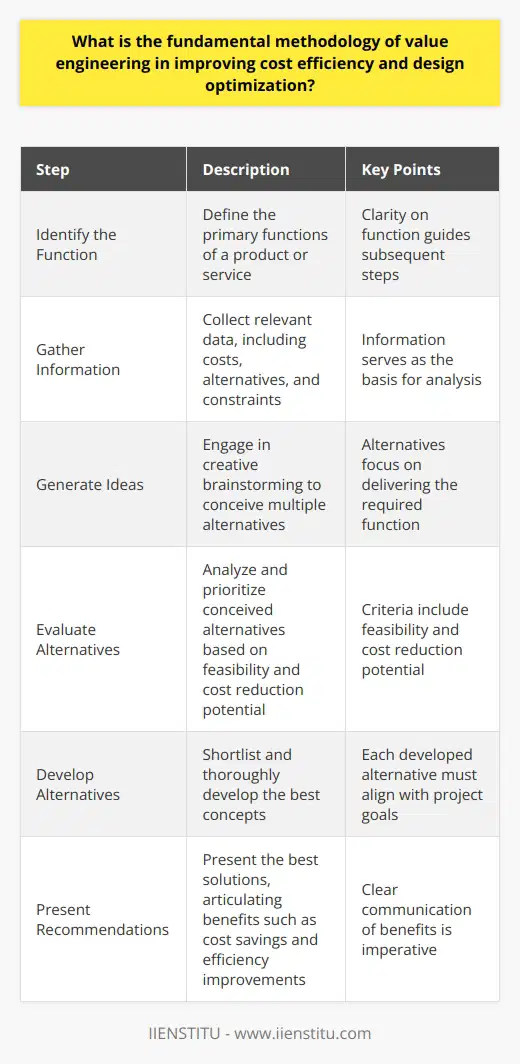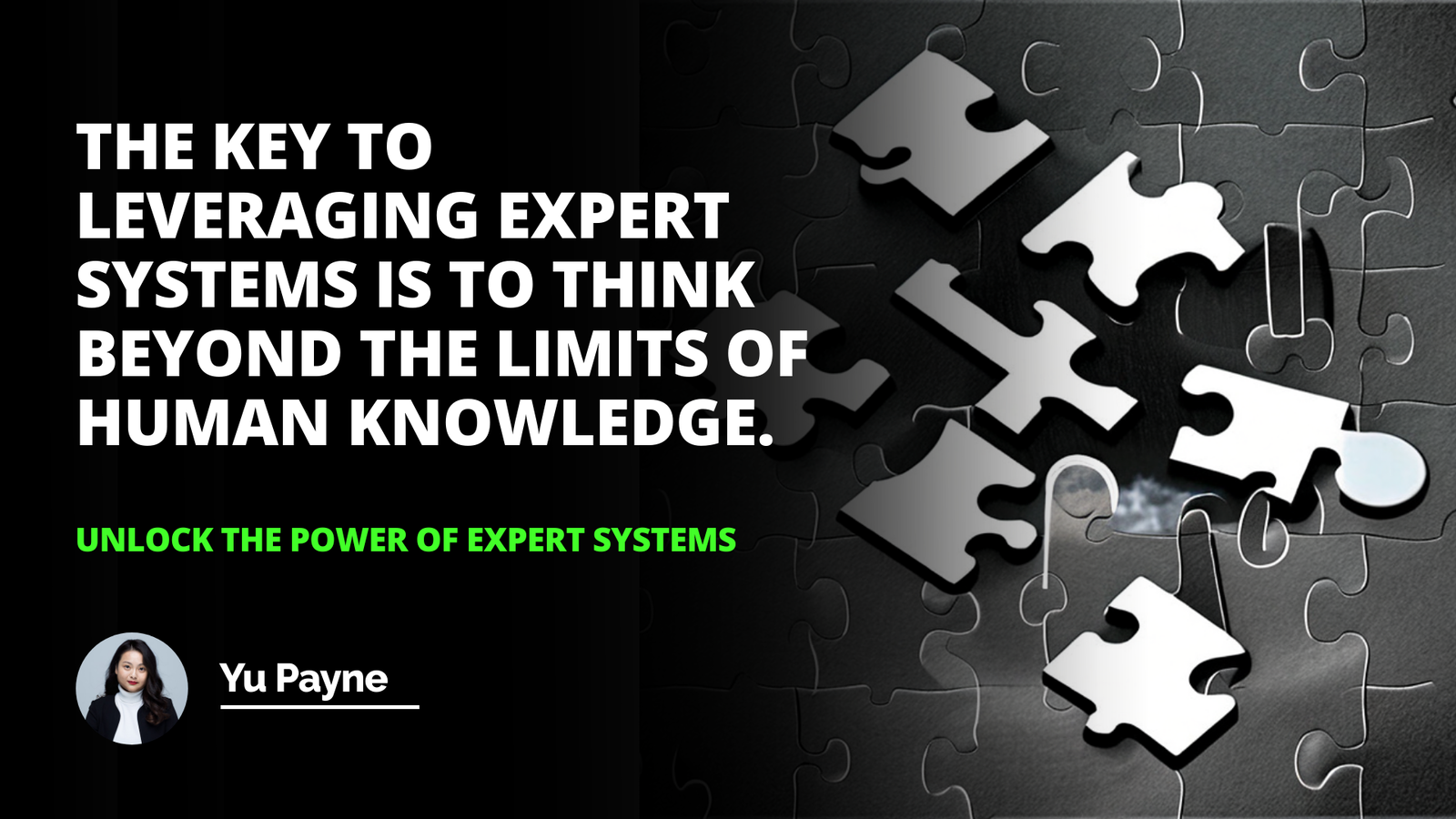
Value engineering (VE) is a systematic and organized approach aimed at enhancing the value of goods or products and services by using an examination of function. Value, in this respect, can be defined as the ratio of function to cost, meaning that the basic intent of value engineering is to increase the value of a product by either improving its function or reducing its cost.
Adopting value engineering in modern industry is not merely a cost-saving measure, but a comprehensive strategy that ensures product durability, quality, efficiency, and customer satisfaction. Understanding the full breadth of value engineering allows industry professionals to make informed decisions that can significantly impact the final product's market success and overall organizational growth.
History and Evolution of Value Engineering
Origin of VE: Value Engineering originated during World War II when resources were significantly constrained. Engineer Lawrence Miles, employed by General Electric, was confronted with material shortages and thus compelled to seek alternatives. Miles's initiative to replace materials without reducing the product's quality or functionality marked the birth of value engineering as a formal discipline. This pivotal period highlighted the necessity of resource optimization and paved the way for the future of cost-efficient design principles in various industries.
Milestones in the progression of VE: The journey of value engineering from a wartime necessity to a widely recognized practice took several decades. Post-war, businesses saw its potential to improve profitability through cost saving and value improvement. Milestones include the establishment of the Society of American Value Engineers (now SAVE International) in 1959, and the integration of VE principles into standards and training programs. Today, problem solving training courses and online certificate courses have become avenues to disseminate the methodologies of VE to a broader audience, underlining its enduring relevance.
Principles and Methodologies of Value Engineering
Overview of the basic principles: At its core, value engineering is predicated on the principles of understanding the basic functions of a product or service and finding ways to achieve those functions at the lowest life-cycle cost consistent with required performance, reliability, quality, and safety. It does not simply cut costs, but rather, it seeks to maximize value according to the customer's perspective. Critical thinking and creativity are crucial for the successful application of VE.
Detailed explanation of the job plan: The methodological framework of value engineering is encapsulated in a five-stage job plan that guides the practitioner through a structured problem-solving process.
Information Phase: In the Information Phase, the team focuses on understanding the project's background, objectives, and constraints. This involves gathering data, understanding the requirements, and establishing the scope of application. A thorough analysis at this stage sets the stage for more effective innovation later in the process.
Speculation Phase: The Speculation Phase encourages out-of-the-box thinking to generate alternative ideas that could potentially enhance value. Here, the aim is to brainstorm without criticism, allowing the team to compile a broad array of potential solutions.
Evaluation Phase: The Evaluation Phase involves the critical assessment of the brainstormed ideas. Solutions are analyzed for feasibility, cost implications, and potential value added. It is a process of filtering and prioritizing the speculative phase's creative output.
Development Phase: Once viable ideas have emerged, they enter the Development Phase where they are elaborated into workable solutions. Detailed proposals are formulated, including sketches, plans, and cost estimates.
Presentation Phase: Finally, in the Presentation Phase, the developed proposals are formally compiled and presented to the client or decision-makers. This stage is crucial for achieving buy-in and the successful implementation of proposed value engineering changes.
Importance and Benefits of Value Engineering
Cost reduction without compromising quality: One of the most salient advantages of value engineering is its potential to significantly reduce costs while maintaining, or even improving, the quality and functionality of the product. It promotes an environment wherein cost-effectiveness is inherently linked to the value proposition, ensuring that quality remains a central focus.
Enhancement of product features and performance: Value engineering also provides a platform for continuous improvement of product features and performance, bridging the gap between what is and what could be. Through its systemic approach, VE fosters innovation, adapts to changing market demands, and enhances customer satisfaction.
Improvement of resource allocation and efficiency: Furthermore, VE development is pivotal for optimizing resource allocation. It encourages the efficient use of resources and materials, responding not only to economic constraints but also environmental sustainability concerns. By minimizing waste and promoting an eco-friendly approach, VE demonstrates its modern relevance.
Implementing Value Engineering in Different Fields
Application of VE in construction and manufacturing: Value Engineering has been widely adopted in construction and manufacturing due to its significant impact on reducing project costs, improving quality, and ensuring timely delivery. This approach allows construction and manufacturing firms to critically analyze every project element, thus optimizing the overall design and production process.
Case Study - VE in Civil Engineering projects: A notable case study in civil engineering projects is the application of VE to a bridge construction project. By evaluating alternative materials and design approaches, the VE team was able to reduce construction costs by a considerable percentage while improving structural efficiency and longevity.
VE in the software and technology industry: Similarly, VE has found its way into the software and technology industry. In an environment where rapid innovation is key, VE helps companies streamline their development processes, enhance product functionality, and manage costs effectively.
Case Study - VE in software development projects: In the context of software development, value engineering can result in the adoption of agile methodologies and the reevaluation of feature sets to ensure that the most valuable aspects of the software are produced within budget and time constraints. A case study in this realm could detail how a software company eliminated redundant features, simplified user interface design, and reconfigured their development pipelines through VE approaches, ultimately leading to increased customer satisfaction and market competitiveness.
Common Challenges and Roadblocks in Implementing Value Engineering
Identification of potential obstacles: While the benefits of value engineering are substantial, implementing it is not without challenges. Resistance to change, cultural hurdles, and organizational silos can all impede the VE process. An understanding of how these factors affect the adoption of VE initiatives is crucial in overcoming such barriers.
Solutions and mitigation strategies: Key to overcoming these challenges is effective communication, training, and involvement of all stakeholders in the VE process. Moreover, emphasizing the potential cost savings and value additions that can be achieved through VE helps build momentum and overcome resistance. Establishing clear goals, providing rewards for innovative solutions, and equipping teams with resources for problem solving training courses are effective strategies that enhance the integration of VE into organizational practice.
Recap of the significance of VE
In summary, value engineering proves to be a vital tool in the continuous effort to optimize cost and quality. The structured approach of VE enables multifaceted industries to realize tangible benefits, from cost savings and improved functionality to efficient resource utilization and increased competitiveness.
Encouragement for further exploration of VE
As businesses and global industries evolve, the implementation of value engineering becomes increasingly relevant. The call to action for industry professionals is to delve deeper into the principles and methodologies of VE, embracing opportunities for innovation and efficiency. An investment in comprehensive knowledge acquisition through online certificate courses or in-person workshops can empower individuals and organizations alike to harness the transformative potential of value engineering.
Frequently Asked Questions
What is the fundamental methodology of value engineering in improving cost efficiency and design optimization?
Understanding Value Engineering
Value engineering emerges as a systematic method. It focuses on improving cost efficiency and design optimization. This methodology seeks optimum value. Here, value refers to the ratio of function to cost.
The Approach to Value Engineering
Adopting value engineering involves several steps.
Identify the Function
First, one must define the primary functions of a product or service. Clarity on function guides the subsequent steps.
Gather Information
Teams collect relevant data. Costs, alternatives, and constraints are crucial. Information serves as the basis for analysis.
Generate Ideas
Creative brainstorming follows. Teams conceive multiple alternatives. These alternatives focus on delivering the required function.
Evaluate Alternatives
Next, groups analyze the conceived alternatives. They prioritize solutions. Criteria include feasibility and cost reduction potential.
Develop Alternatives
The team shortlists the best concepts. These undergo thorough development. Each must align with the project goals.
Present Recommendations
Finally, teams present the best solutions. Recommendations must clearly articulate benefits. These include cost savings and efficiency improvements.
Benefits of Value Engineering
Value engineering offers distinct advantages.
Ensures cost-effectiveness across the project lifecycle.
Encourages innovative thinking.
Enhances product functionality.
Implementation of Value Engineering
Success in value engineering calls for comprehensive collaboration. It requires involvement from all stakeholders. Clear communication becomes imperative.
Cross-Functional Teamwork
Diverse teams bring varied expertise to the process. Each member contributes unique insights. This variety enriches the value engineering process.
Value Engineering in Design Optimization
In design optimization, value engineering shines. It involves iterative refinement. The goal is matching the design to user needs.
Streamlining Designs
Simplification marks a critical strategy. Overdesigned products waste resources. Value engineering seeks the essence of functionality.
Balancing Cost-Quality
Teams strive for an optimal cost-quality mix. Affordability remains key. Yet, teams must not compromise on quality.
Value engineering proves vital in many industries. It serves as a tool for cost reduction. It also functions as a means to enhance value. Its methodology integrates well into existing processes. Teams that adopt it see measurable improvements. Thus, value engineering remains a fundamental approach for organizations. It seeks to increase efficiency and optimize design.

How are traditional engineering strategies different from the concepts of value engineering?
Traditional Engineering Strategies
Traditional engineering focuses on function and form. Engineers apply scientific principles. They design structures, systems, and products. Durability and stability matter greatly. Performance is key. Often, these are tangible, physical outcomes.
Cost is a consideration, not the driving factor. Traditionally, engineers aim for reliability. They use established design practices. Safety and compliance with standards are crucial. Engineers work within the confines of these priorities. Innovation occurs but within these parameters.
Value Engineering Concepts
Value engineering rethinks this approach. It emerged during World War II. Engineers needed to maximize resources. They had to minimize cost without sacrificing performance. Today, this methodology pervades many industries.
Core of Value Engineering
At its core, value engineering seeks to reduce unnecessary expenditures. Engineers scrutinize every aspect of a project. They ask: Does this add value? They focus on the functions of a product or system. They challenge the status quo. The goal is to deliver the most value at the lowest cost.
Comparison and Contrasts
Focus on Functionality
Traditional engineering does not ignore cost entirely. However, its methods are more straightforward. In contrast, value engineering involves a methodical process. This process examines the ratio of function to cost methodically.
Collaboration and Analysis
Value engineering encourages multidisciplinary collaboration. Teams bring diverse perspectives to a project. They dissect and analyze functions collectively. Traditional engineering strategies may be less collaborative.
Life-Cycle Perspective
Value engineering considers a long-term perspective. It is not just about initial costs. Engineers evaluate life-cycle costs. They question long-term value and savings. Traditional methods might focus on up-front efficiency.
Phased Approach
Value engineering uses a phased approach. Typically, this includes:
Information Phase: Understand project specifics.
Creative Phase: Generate alternative solutions.
Evaluation Phase: Assess viable alternatives.
Development Phase: Work up practical solutions.
Presentation Phase: Propose optimizations.
Traditional engineering may not segment the process this way.
Tools and Techniques
Value engineering utilizes specific tools:
Function Analysis: Breaks down complex systems.
FAST Diagramming: Visualizes functions and relationships.
Life-Cycle Costing: Assesses total cost of ownership.
Traditional engineering strategies use different tools. Such tools may stress technical specs over cost-function relationships.
Flexibility and Adaptation
Value engineering thrives on flexibility. It views constraints as opportunities. Traditional engineering tackles constraints with tried-and-true solutions. Adaptability is usually within a narrower range.
Value engineering diverges from traditional methods. It optimizes value by scrutinizing costs and functions. Traditional engineering builds on time-proven methods. It emphasizes performance, often with less cost emphasis.
Both are valuable. They serve different purposes. Value engineering can complement traditional strategies. Together, they can lead to economically and functionally robust solutions.

What key elements contribute to the successful implementation of value engineering in project management?
Understanding Value Engineering
Value engineering (VE) is a systematic method. It improves the value of goods or products. VE focuses on the functions of an item. It provides necessary functions at the lowest cost. Success in VE has key elements.
Clarity in Objectives
Projects need clear goals. VE must align with these goals. Stakeholders should understand and agree on objectives. This prevents misalignment. It focuses team efforts. Clear objectives guide decision-making.
Strong Leadership
Effective VE needs good leadership. Leaders must be skilled in VE principles. They must guide teams through the VE process. Leaders coordinate tasks. They maintain team focus. They resolve conflicts.
Cross-Functional Teams
Teams must have diverse skills. Engineers, buyers, and project managers must work together. They bring different perspectives. They contribute unique insights. Collaboration increases the chance of success.
Training and Expertise
VE demands specific knowledge. Team members need training. Regular workshops and seminars help. Expertise in VE is crucial. It helps teams identify cost-saving opportunities.
Structured Methodology
VE follows a structured approach. It starts with project selection. It includes information gathering and analysis. Functional analysis is common. Cost models are important tools. This structure is imperative.
Stakeholder Engagement
Projects have multiple stakeholders. Engaging them is key. Feedback from stakeholders gives direction. It makes value propositions better. It helps in meeting stakeholders’ needs.
Keep Track of the Lifecycle Costs
Focus on the entire lifecycle. Consider all costs associated. This includes acquisition, operation, and disposal costs. MD focuses on long-term value. It saves more money over time.
Flexibility and Adaptability
Projects change. VE must adapt to these changes. Flexibility allows teams to adjust plans. It maintains the relevance and effectiveness of VE efforts.
Continuous Improvement
VE is not a one-time activity. Constant evaluation is essential. Teams should learn from each project. They should apply lessons to future efforts.
Effective Communication
Teams must communicate well. Clear communication prevents misunderstandings. It ensures that everyone knows their role. It maintains alignment with project goals. Good communication spreads best practices.
Risk Management
VE involves change. Change brings risk. Identifying and mitigating risks is fundamental. It ensures that value improvements are sustainable.
Understanding these elements is vital. They help in implementing VE successfully. They maximize project value. They satisfy stakeholder needs. VE is a powerful tool for project management when done right.



